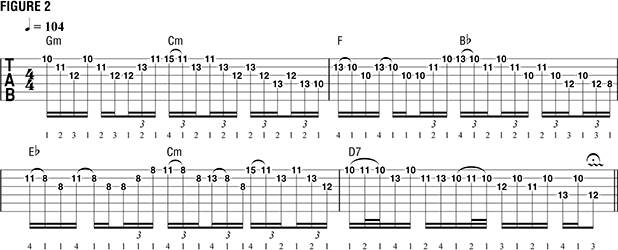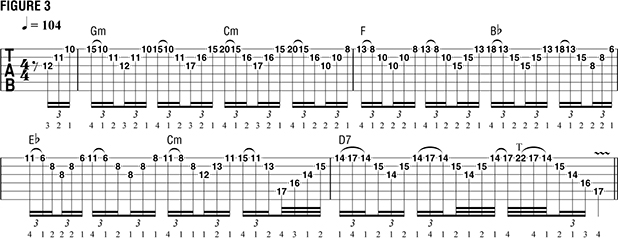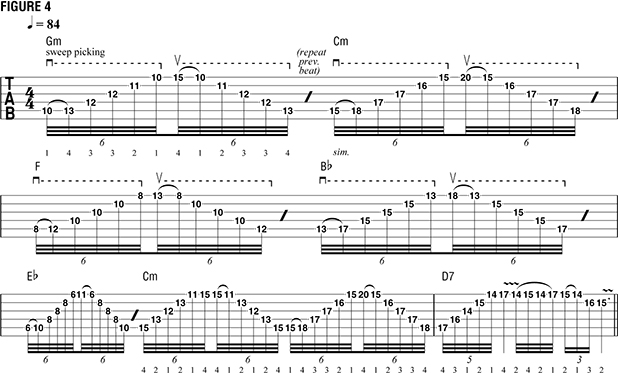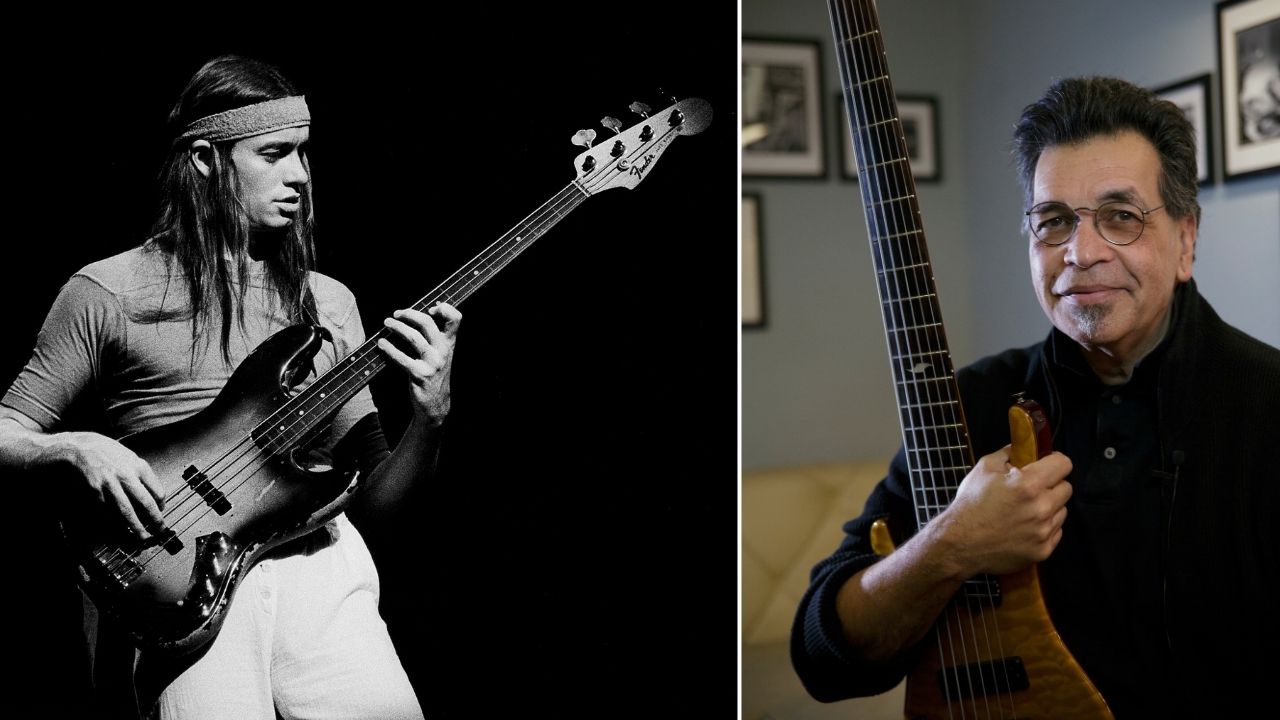Phrasing Arpeggios Over a Chord Progression
Learn how to use arpeggios to outline a chord progression in ways that sound more musical and inventive.

This column is taken from the May 2007 issue of Guitar World.
One of my favorite things to do is take a classically flavored chord progression, like the one shown in FIGURE 1, and use it in a rock guitar context. This particular progression is based for the most part on what is known as the cycle of fourths, in that the root note of each of the first five chords is the interval of a fourth above the previous root note. The first chord, Gm, is the tonic or “home” chord that defines the key. The five chords that follow are all built from the notes of the G natural minor scale (G A Bb C D Eb F), and the final chord, D7, is derived from G harmonic minor (G A Bb C D Eb F#).
A musically effective way to play over a progression like this is to string together a sequence of arpeggios that clearly outlines the chord changes. The danger with this methodical approach, however, is that by beginning each arpeggio on its root note and playing it straight up and down, you can sound too predictable and, ultimately, not very melodic. But as I will demonstrate, you can use arpeggios to outline a chord progression in ways that sound more musical and inventive.


In FIGURE 2, I’ve put together a phrasing scheme with a series of arpeggios that navigate the chord progression in a way that varies the direction, or contour, of the line. I also begin each arpeggio on a chord tone other than the root note, which creates a harmonious counterpoint when heard together with the root note, played by a bass or other instrument. Notice how I establish a “thematic phrasing structure” over the two chords in bar 1 that is then applied and adapted to both pairs of chords in bars 2 and 3. In bar 4, I end the phrase with a more scalar line based on the D Phrygian-dominant mode (D Eb F# G A Bb C), which is the fifth mode of G harmonic minor.


There are times, however, such as when you’re playing a capella (unaccompanied), when it just feels better to sweep through each arpeggio in a more straight-ahead, rhythmically uniform fashion, as demonstrated by the “virtuoso-style” runs in FIGURES 3 and 4.
All the latest guitar news, interviews, lessons, reviews, deals and more, direct to your inbox!
